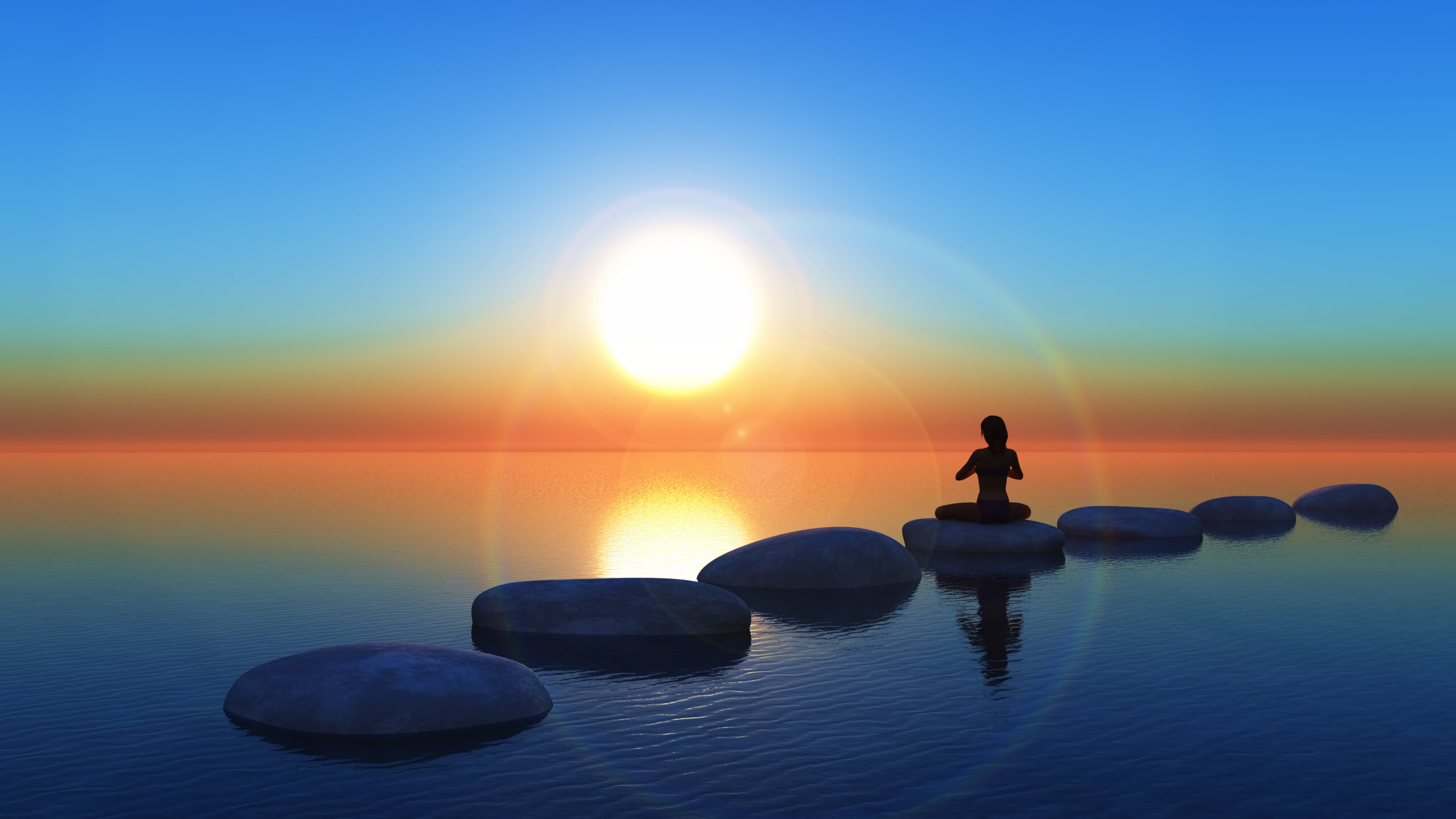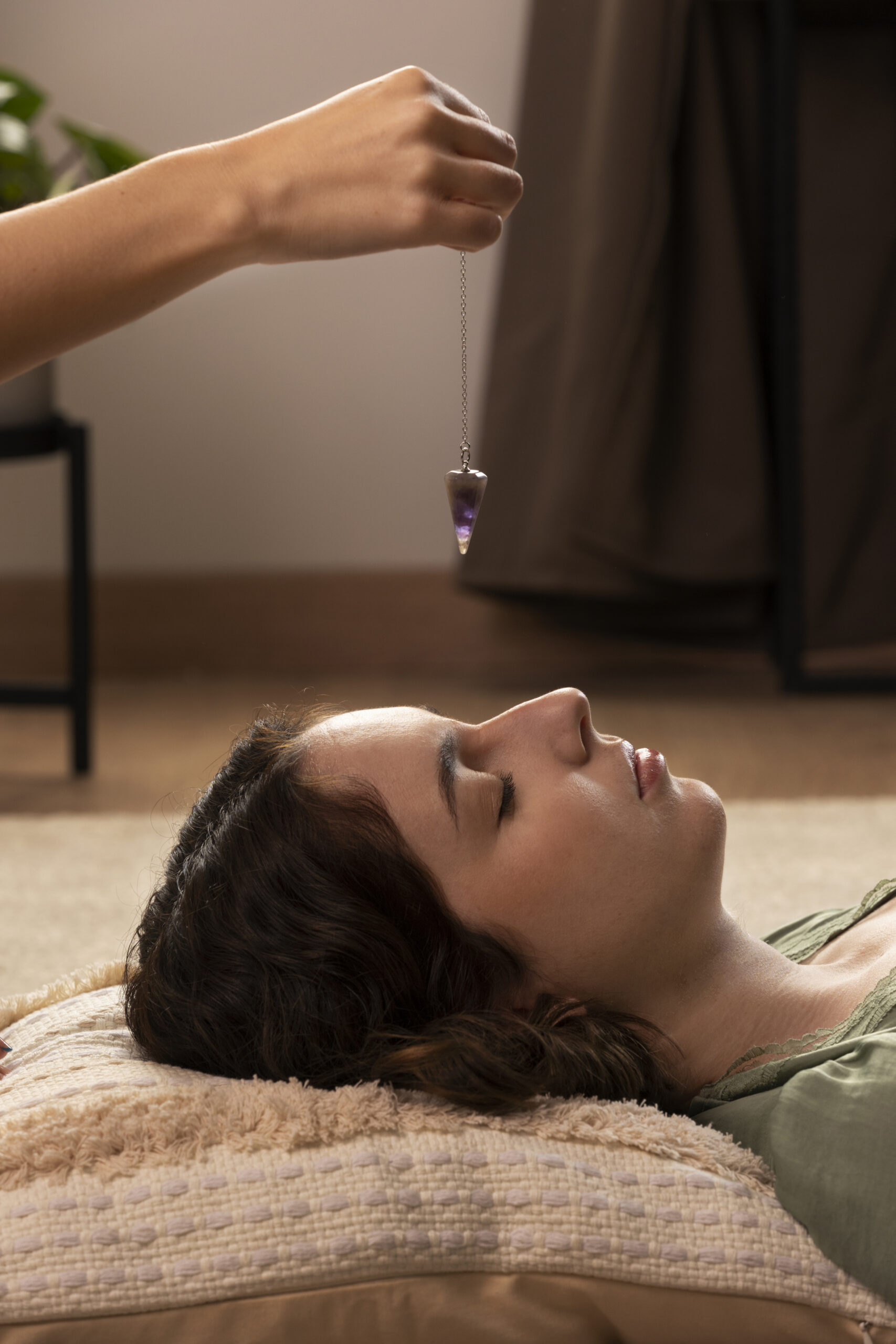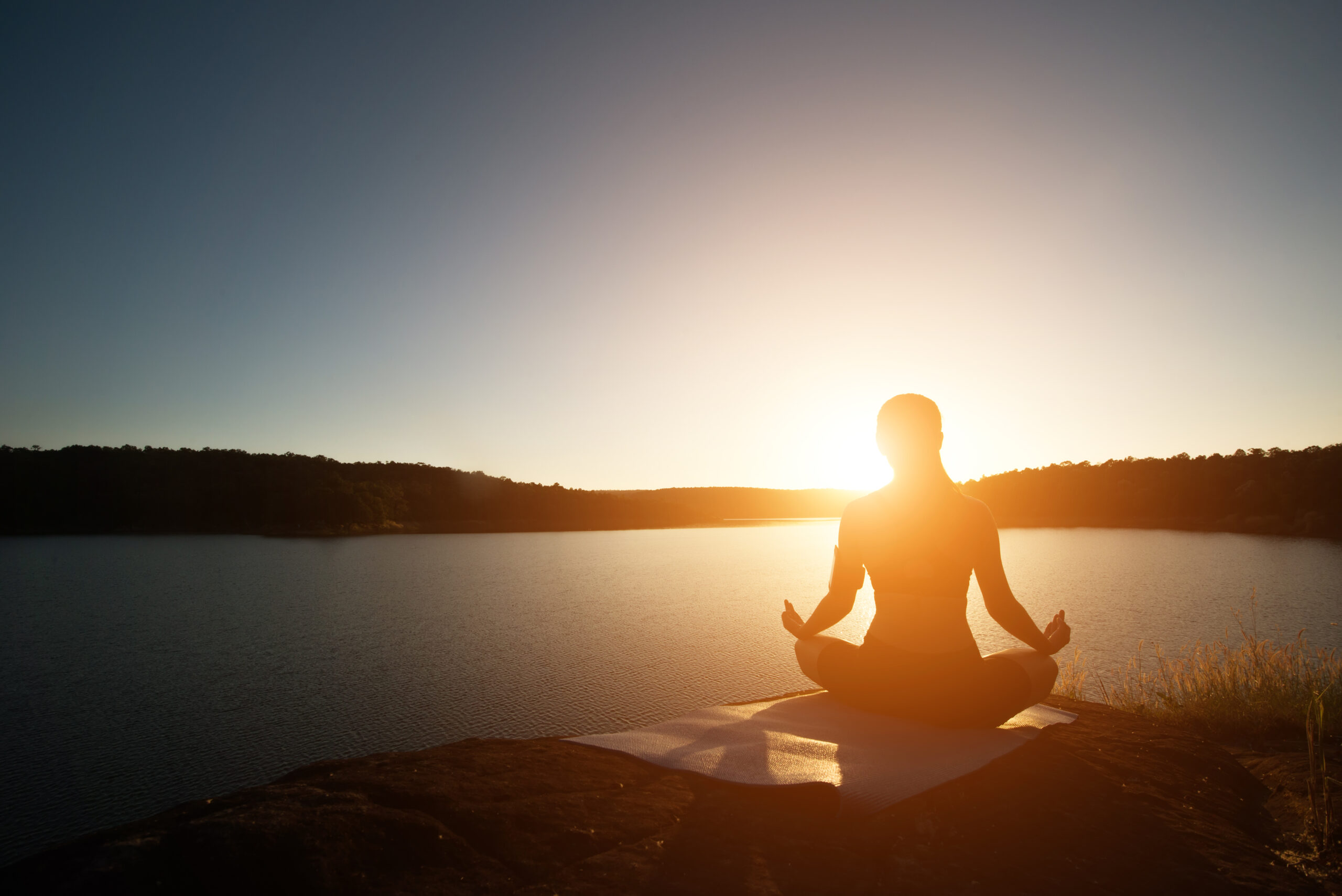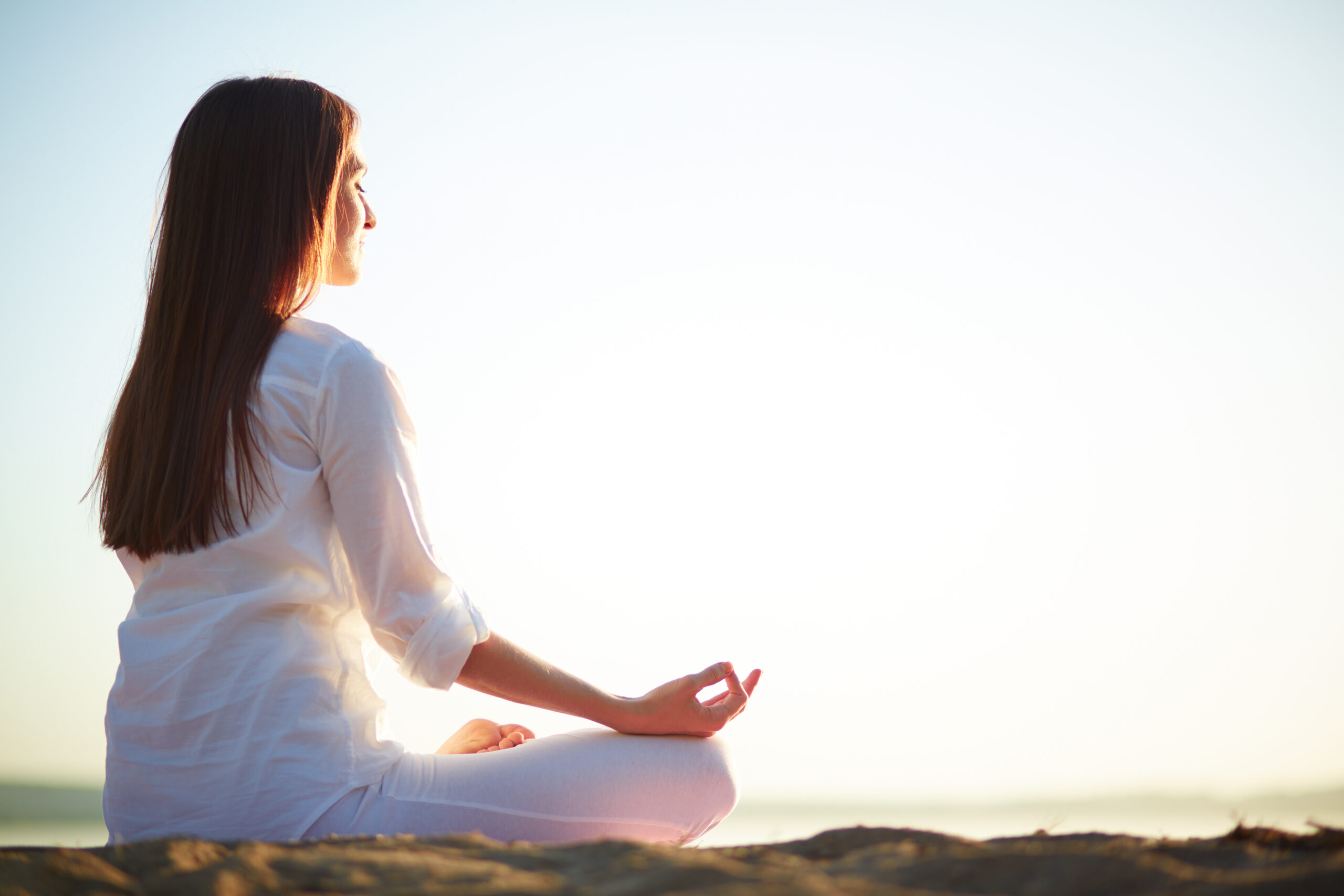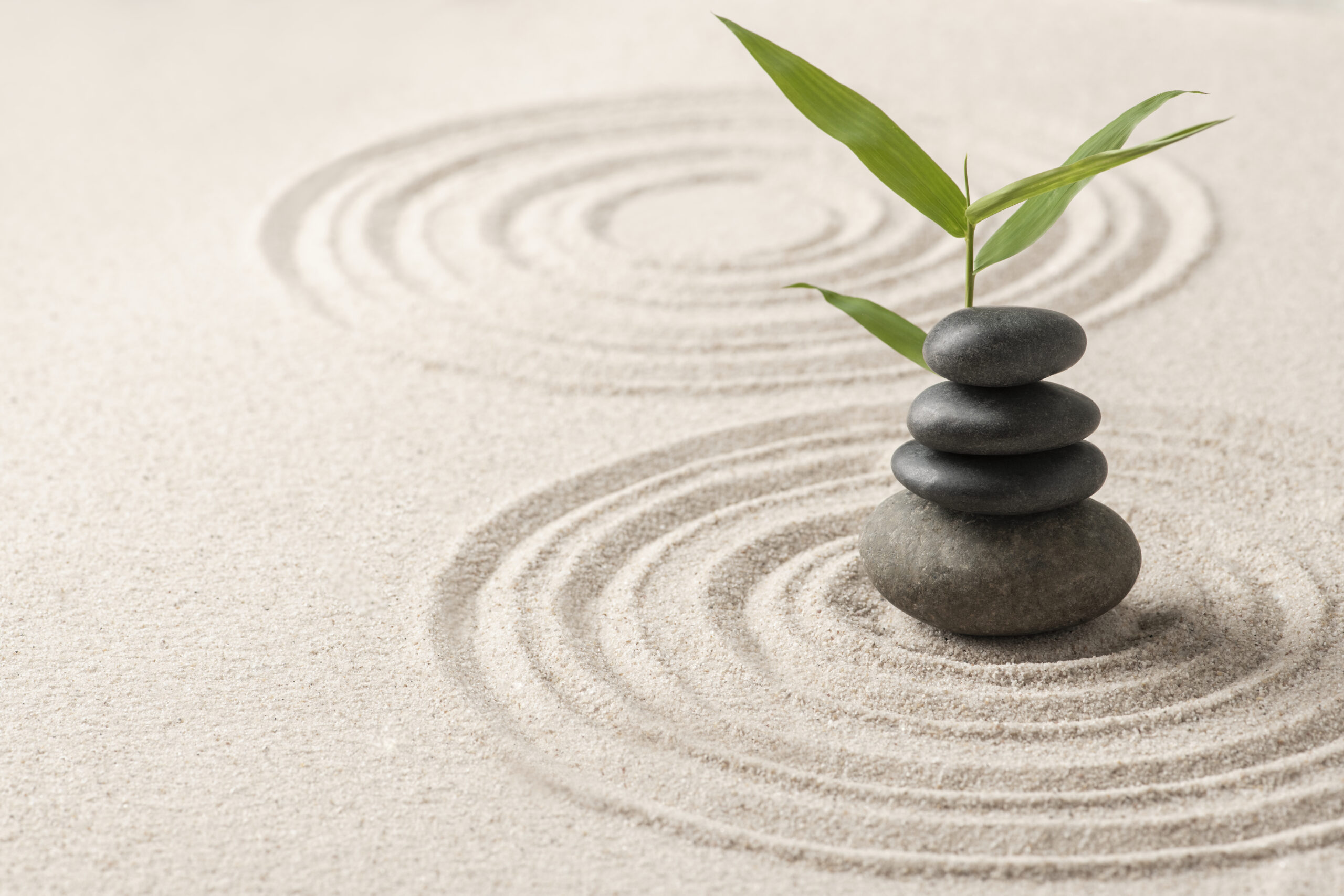In the bustling routine of our lives, Wednesdays often blend into the whirlwind of midweek tasks and obligations. Yet, what if we paused in the midst of this commotion to unravel a beacon of mindfulness and introspection? Wednesdays, often termed ‘Hump Day,’ can transform into a space of wonder and mental rejuvenation. Amidst the hustle, we can infuse the day with contemplation and mindfulness, elevating its significance beyond a mere midweek checkpoint. The Significance of Mental Health Mental health, an integral facet of our overall well-being, often hides behind the curtains of societal expectations and daily exigencies. The truth remains—mental health encompasses our emotional, psychological, and social well-being, influencing how we think, feel, and act. It impacts every aspect of our lives, from relationships to work productivity, underscoring its paramount importance. The Essence of Wonder in Mental Health Enter Wonder Wednesday—an invitation to explore the depths of our thoughts, feelings, and experiences. It’s a day to foster a sense of curiosity about our mental landscape. Wonder encompasses not just awe at the world around us but also a deeper contemplation of our inner selves. On this day, let’s embark on a journey to wonder about our mental well-being. Let’s engage in activities that spark joy, self-reflection, and mindfulness. Whether it’s journaling our thoughts, indulging in creative pursuits, or simply taking a tranquil stroll in nature, these acts of wonder hold the potential to nurture our mental health. Breaking the Stigma Mental health stigma, unfortunately, remains a barrier to seeking support and understanding. Wonder Wednesday offers a platform to chip away at this stigma. By openly discussing mental health, sharing our experiences, and extending empathy to those in need, we create an inclusive environment where seeking help is viewed as a courageous step toward healing. Nurturing Mental Health Amidst the chaos of midweek deadlines and responsibilities, allocating time for mental health isn’t merely a luxury but a necessity. Wonder Wednesdays serve as a gentle reminder to practice self-care and prioritize our mental well-being. Engaging in activities that bring joy, connecting with loved ones, and seeking professional help if needed are vital steps toward nurturing our mental health. The Power of Community Beyond personal endeavors, Wonder Wednesday also underscores the strength of community support. It’s a day to check in on friends, colleagues, and family members, fostering an environment where conversations about mental health are welcomed and encouraged. Small acts of kindness and understanding can create ripples of positivity, shaping a more supportive and compassionate society. Wonder Wednesdays hold immense potential to transform our midweek routine. Embracing this day as a platform for mental wellness amplifies its significance. Let’s infuse our Wednesdays with wonder, fostering a culture that values and prioritizes mental health. Together, let’s embark on this journey of introspection, self-care, and empathy, weaving wonder into the fabric of our lives. Ma ci sono due buone notizie: la prima, è che l’allergia non solo si può prevenire, ma farla scomparire nel medio periodo; la seconda, è che esistono terapie dolci e naturali, come l’omeopatia, per *curarla.* “Per capire come sia possibile bisogna chiarire il concetto stesso di allergia. Fino a poco tempo fa, l’allergia era considerata un difetto dell’organismo, mentre oggi è possibile parlare di allergia come difesa, come un fenomeno normale in tutti”. Da cui si può guarire.L’allergia è un’infiammazione generale dell’organismo, che non sa più come difendersi : le difese immunitarie non bastano più, e l’unica cosa che può fare per eliminare ciò che lo intossica è buttarlo fuori.Non a caso le reazioni allergiche – starnuti, lacrimazione… – consistono in un’espulsione di ciò che non è più tollerato”. A risultare intollerabile per il corpo, però, non sono tanto il polline e gli acari, ma tutto lo stress accumulato in precedenza: ambientale (come l’inquinamento), legato allo stile di vita (il troppo lavoro) o emotivo: cambiamenti e traumi, come aveva scoperto nel 2001 Rita Levi Montalcini, infatti, abbassano notevolmente la nostra soglia di tolleranza. I pollini o gli acari, sono solo la goccia che fa traboccare il vaso…confronto alle cure tradizionali, i rimedi dell’omeopatia hanno diversi vantaggi: – *non hanno effetti collaterali tipici degli antistaminici come sonnolenza e disturbi dell’attenzione – sono naturali – non sono tossici, quindi non c’è rischio di sovradosaggio – possono essere associati alle terapie tradizionali – possono essere utilizzati anche da donne in gravidanza, bambini e anziani – possono essere assunti anche per lunghi periodi, e proprio per questo sono efficaci nel prevenire i sintomi delle allergie.
Dance as a Therapeutic Medium for Mental Well-being
Il 10 febbraio è cominciata la Primavera in Medicina Cinese . I casi di allergia sono in aumento, e al momento si stima che nel mondo occidentale soffrano di allergia circa il 30% degli adulti e il 40% dei bambini, alle prese con starnuti, riniti e congiuntiviti allergiche, in reazione ad acari, polline e chi più ne ha più ne metta. Ma ci sono due buone notizie: la prima, è che l’allergia non solo si può prevenire, ma farla scomparire nel medio periodo; la seconda, è che esistono terapie dolci e naturali, come l’omeopatia, per *curarla.* “Per capire come sia possibile bisogna chiarire il concetto stesso di allergia. Fino a poco tempo fa, l’allergia era considerata un difetto dell’organismo, mentre oggi è possibile parlare di allergia come difesa, come un fenomeno normale in tutti”. Da cui si può guarire.L’allergia è un’infiammazione generale dell’organismo, che non sa più come difendersi : le difese immunitarie non bastano più, e l’unica cosa che può fare per eliminare ciò che lo intossica è buttarlo fuori.Non a caso le reazioni allergiche – starnuti, lacrimazione… – consistono in un’espulsione di ciò che non è più tollerato”. A risultare intollerabile per il corpo, però, non sono tanto il polline e gli acari, ma tutto lo stress accumulato in precedenza: ambientale (come l’inquinamento), legato allo stile di vita (il troppo lavoro) o emotivo: cambiamenti e traumi, come aveva scoperto nel 2001 Rita Levi Montalcini, infatti, abbassano notevolmente la nostra soglia di tolleranza. I pollini o gli acari, sono solo la goccia che fa traboccare il vaso…confronto alle cure tradizionali, i rimedi dell’omeopatia hanno diversi vantaggi: – *non hanno effetti collaterali tipici degli antistaminici come sonnolenza e disturbi dell’attenzione – sono naturali – non sono tossici, quindi non c’è rischio di sovradosaggio – possono essere associati alle terapie tradizionali – possono essere utilizzati anche da donne in gravidanza, bambini e anziani – possono essere assunti anche per lunghi periodi, e proprio per questo sono efficaci nel prevenire i sintomi delle allergie.
Italian Article: Curare Le Allergie
Il 10 febbraio è cominciata la Primavera in Medicina Cinese . I casi di allergia sono in aumento, e al momento si stima che nel mondo occidentale soffrano di allergia circa il 30% degli adulti e il 40% dei bambini, alle prese con starnuti, riniti e congiuntiviti allergiche, in reazione ad acari, polline e chi più ne ha più ne metta. Ma ci sono due buone notizie: la prima, è che l’allergia non solo si può prevenire, ma farla scomparire nel medio periodo; la seconda, è che esistono terapie dolci e naturali, come l’omeopatia, per *curarla.* “Per capire come sia possibile bisogna chiarire il concetto stesso di allergia. Fino a poco tempo fa, l’allergia era considerata un difetto dell’organismo, mentre oggi è possibile parlare di allergia come difesa, come un fenomeno normale in tutti”. Da cui si può guarire.L’allergia è un’infiammazione generale dell’organismo, che non sa più come difendersi : le difese immunitarie non bastano più, e l’unica cosa che può fare per eliminare ciò che lo intossica è buttarlo fuori.Non a caso le reazioni allergiche – starnuti, lacrimazione… – consistono in un’espulsione di ciò che non è più tollerato”. A risultare intollerabile per il corpo, però, non sono tanto il polline e gli acari, ma tutto lo stress accumulato in precedenza: ambientale (come l’inquinamento), legato allo stile di vita (il troppo lavoro) o emotivo: cambiamenti e traumi, come aveva scoperto nel 2001 Rita Levi Montalcini, infatti, abbassano notevolmente la nostra soglia di tolleranza. I pollini o gli acari, sono solo la goccia che fa traboccare il vaso…confronto alle cure tradizionali, i rimedi dell’omeopatia hanno diversi vantaggi: – *non hanno effetti collaterali tipici degli antistaminici come sonnolenza e disturbi dell’attenzione – sono naturali – non sono tossici, quindi non c’è rischio di sovradosaggio – possono essere associati alle terapie tradizionali – possono essere utilizzati anche da donne in gravidanza, bambini e anziani – possono essere assunti anche per lunghi periodi, e proprio per questo sono efficaci nel prevenire i sintomi delle allergie.
Helichrysum Italicum
(Note: Before any application or use of the information below, first consult with your doctor. I am not a medical professional, and my article is strictly based on my personal knowledge and experiences. Always do a test patch for skin allergies before use, and consult your medical professionals to ensure this is the right oil or herb for you. Also known as Italian Strawflower or Immortelle. It has been used for hundreds of years to help with a variety of issues. It tends to be found in the Mediterranean on rocky, sandy, or dry ground. Its scent is bitter and comparable to curry, sage, or wormwood. Many times, it is paired with fish for cooking. Helichrysum increases cutaneous microcirculation and collagen. Giving it a high level of antioxidant behavior. This has a benefit in healing wounds and scar tissue. Its effects are also beneficial for old scars. For a good face application or to apply to scar tissue, I would combine 10 drops of Helichrysum oil and 10 drops of Frankincense oil and mix with 80–100 drops of carrier oil (I prefer Castor Oil). Massage gently 2-3 times a day for scar tissue, and 1 to 2 times a day for general facial rejuvenation.For broken bones, bruises, or muscle pains, take 10–30 drops of the essential oil and apply them to a damp gauze pad soaked in hot water. Place it on the area where you have pain and cover it with saran wrap. You can leave this for 1-4 hours; if irritation occurs, remove the compress immediately and consult a doctor. The history of Helichrysum italicum, or Immortelle, boasts its anti-aging benefits. I try to use this oil 2-4 times a week, mixed in with my regular face cream. I take 5–10 drops mixed into a dime-to-quarter-sized amount of face cream and apply topically. Its natural ability to produce collagen helps to diminish fine lines and wrinkles in the face. It also promotes nerve regeneration and reduces inflammation. Making this a must-have for your anti-aging regime. Ingesting the leaves or flowers can help aid in digestion, stomach bloating, acid reflux, and constipation. It has healing properties for your intestines as well. If you are experiencing pain or discomfort in the digestive tract, Helichrysum will aid in healing or at least provide some relief internally. Just from the anti-inflammatory properties alone. There are several brands of tea online that can provide an easy, pre-prepared method. For any other advice on natural remedies, book a session with me, Valentino, and let’s learn how to heal together the natural way. All recommendations for supplements or herbs should always be OK’d with your doctor before use. Love and light-VF
Beyond Shadows: Groundhog’s Day, Imbolc, Sunlight, and the Path to Holistic Wellness
Between shadows and light, there lies a world of mystery—the relationship between the Groundhog, Imbolc, the return of the light, and good health. On February 2nd, a convergence of celebrations unfolds as Groundhog Day and Imbolc coincide in their observance of early February weather patterns. Imbolc, also known as Saint Brigid’s Day or Candlemas, is a Celtic festival marking the midpoint between the winter solstice and the spring equinox, typically occurring around February 2nd. This festival signifies a period of emerging light and the initial signs of spring. Throughout the years, superstitions have linked favorable weather on this day to a challenging latter half of winter, while cold and stormy conditions hint at a milder conclusion to the season. Groundhog Day’s traditions involve the groundhog’s shadow, with its presence or absence determining either six more weeks of hibernation or fair weather. Within these traditions, a lingering question arises: could the groundhog’s abilities extend beyond weather forecasting to possibly anticipate the conclusion of the cold and flu season, shedding light on the path to improved health? Exploring the Relationship Between Sunlight and Health Sunlight, an abundant source of benefits, has been harnessed throughout history for infection prevention, disease mitigation, and healing. Activated by sunlight, beneficial biomolecules play a crucial role in enhancing both mental and physical well-being. These biomolecules function as anti-inflammatories, vasodilators, and endorphin releasers, contributing to an overall sense of health. Historical observations from the Victorian era revealed that patients in well-lit rooms experienced faster recovery compared to those in windowless spaces, laying the groundwork for a contemporary understanding of the intricate connection between sunlight, science, and medicine. One of the extensively documented advantages of sunlight is the production of vitamin D, commonly referred to as the “sunshine vitamin.” Maintaining optimal vitamin D levels is vital for supporting a well-balanced life, providing protection against diseases, optimizing physical performance, and enhancing mental health. Vitamin D’s positive impact extends across various systems in the body, including the skeletal, cardiovascular, neurological, and immune systems. This comprehensive support underscores the pivotal role sunlight plays in fostering overall health and vitality. In recognizing the manifold benefits of sunlight, it becomes evident that exposure to its rays goes beyond mere illumination. The correlation of biomolecules and the synthesis of vitamin D create a connection between sunlight and the various systems that govern physical and mental well-being. This understanding reinforces the significance of incorporating sunlight into daily life for those seeking a holistic approach to health and wellness. Unraveling the Sunshine Vitamin’s Wonders Despite its classification as a hormone produced within the body, vitamin D operates in response to the sun’s ultraviolet B (UVB) rays. The process involves the conversion of specialized cholesterol to pre-vitamin D3 in the skin, eventually transforming into the active form, calcitriol, after passing through the liver. Regulated by the body’s internal control mechanisms, this process ensures the bioavailability of vitamin D, boosts the immune system, and prepares the body for physical and mental challenges. Daily sunlight exposure has been linked to reduced incidences of various conditions, including multiple sclerosis, type 1 diabetes, hypertension, and certain cancers. Beyond Vitamin D, sunlight exposure induces the production of various hormones and peptides known as photoproducts, contributing to systemic health and wellness. These substances, generated through chemical reactions with sunlight, include: Vitamin D3 Impacts on musculoskeletal, cardiovascular, neurological, and immune system responses Calcitonin Gene-Related Peptide (CGRP) Reduces hypertension and inflammation and regulates the immune system. Neuropeptide Substance P (SP) Promotes proper blood flow and regulates the immune system. Adrenocorticotropic Hormone (ACTH) Reduces inflammation and regulates the immune system. Melanocyte Stimulating Hormone (MSH) Reduces inflammation and increases libido Calcitriol Regulates cellular function and is involved in all major systems of the body. Beta-endorphin (BE) It increases relaxation, acts as a natural painkiller, and promotes a feeling of well-being. These substances collectively create the relaxed and happy sensation experienced with regular sun exposure. Nature encourages the pursuit of sunlight, and the photoproducts synthesized through UVB exposure work together to promote overall health. Determining the Optimal Sunlight Dose Determining the ideal vitamin D dosage presents variability among individuals, with studies indicating that exposure to sunlight resulting in a subtle pinkness of the skin within 24 hours can trigger substantial vitamin D production, ranging from 15,000 to 20,000 IU. Nevertheless, hurdles appear, mainly due to the demands of lifestyles and the requisite optimal atmospheric and geographic conditions. Factors like latitude, season, time of day, cloud cover, altitude, sunscreen use, and pollution contribute to the complexity of achieving the desired exposure levels. These challenges underscore the intricate nature of maintaining sufficient vitamin D levels through sunlight alone. The nuanced interplay between individual factors and environmental conditions necessitates thoughtful consideration for those seeking to harness the health benefits associated with optimal vitamin D production. Supplements vs. Sunlight To address seasonal blues and ensure consistent vitamin D levels throughout the year, many individuals opt for supplements. Research indicates distinctions between the benefits derived from supplements and those from natural sunlight-induced vitamin D. Epidemiological studies linking higher blood levels of vitamin D to disease prevention often underscore the significance of sun exposure rather than reliance on supplemental intake. Consistent findings from population studies stress the crucial role of sunlight exposure in maintaining sufficient vitamin D levels, surpassing the efficacy of supplementation. Recognizing that sunlight offers more than just Vitamin D reveals the vital role of exposure to UVB rays in promoting both physical and mental well-being. Sunlight’s holistic advantages extend beyond the commonly acknowledged benefits, involving a dynamic interplay of various elements that contribute to an enhanced and happier life. The comprehensive well-being achieved through regular exposure to sunlight underscores its importance in sustaining equilibrium and vitality throughout an individual’s life journey. The Holistic Benefits of Sunlight Sunlight has numerous benefits that play a vital role in promoting overall well-being. It’s not just about predicting the weather or getting Vitamin D; sunlight positively affects both physical and mental health. Sunlight’s advantages go beyond its well-known roles, involving various elements that contribute to
Mental Health and Navigating the Spectrum: Unraveling the Differences between Bipolar Disorder and ADHD
Mental health is a complex tapestry woven with various conditions, each presenting its unique challenges. Two such conditions that often garner attention are bipolar disorder and attention-deficit/hyperactivity disorder (ADHD). While they share some commonalities, it is crucial to recognize the distinctive features that set them apart. This discussion aims to delve into the intricacies of bipolar disorder and ADHD, exploring their definitions, symptoms, diagnostic criteria, treatment approaches, and the societal impact of these conditions. Understanding Bipolar Disorder Bipolar Disorder Overview: Bipolar disorder, previously known as manic-depressive illness, is a mood disorder characterized by extreme and fluctuating mood swings. The spectrum includes Bipolar I, Bipolar II, and Cyclothymic disorder, each with its own specific diagnostic criteria. Symptoms and Diagnostic Criteria: Individuals with bipolar disorder experience episodes of mania (elevated mood, increased energy) and depression (persistent sadness, loss of interest or pleasure). Bipolar I requires at least one manic episode, while Bipolar II involves hypomanic and depressive episodes. Cyclothymic disorder is characterized by numerous hypomanic and depressive symptoms without meeting the full criteria for manic or depressive episodes. Etiology and Influencing Factors: Genetic predisposition and environmental factors play roles in the development of bipolar disorder. Research suggests a complex interplay between genetic susceptibility, neurotransmitter imbalances, and life stressors. Real-life Examples: Sharing real-life examples or case studies can provide a human perspective, helping readers relate to the challenges faced by individuals with bipolar disorder. Section 2: Navigating the World of ADHD ADHD Overview: ADHD is a neurodevelopmental disorder that manifests as persistent patterns of inattention, hyperactivity, and impulsivity. The three main types are ADHD Inattentive type, ADHD Hyperactive-Impulsive type, and ADHD Combined type. Symptoms and Diagnostic Criteria: ADHD symptoms include difficulties in sustaining attention, hyperactivity, and impulsivity. Diagnosis requires evidence of symptoms causing impairment in social, academic, or occupational functioning and manifesting before the age of 12. Developmental Aspects and Challenges: ADHD symptoms may change and present differently across life stages, posing unique challenges in childhood, adolescence, and adulthood. Understanding the developmental aspects is crucial for accurate diagnosis and management. Genetic and Environmental Influences: Similar to bipolar disorder, genetics and environmental factors contribute to the development of ADHD. Neurobiological factors, such as dopamine regulation, are implicated in the disorder. Identifying Key Differences Mood Swings vs. Attention Challenges: The primary distinction lies in the nature of the symptoms. Bipolar disorder is characterized by intense mood swings, while ADHD focuses on attention and impulse control challenges. Manic and Depressive Episodes vs. Hyperactivity and Impulsivity: Bipolar disorder involves distinct episodes of mania and depression, whereas ADHD is marked by persistent traits of hyperactivity and impulsivity. Onset Age and Developmental Considerations: Bipolar disorder often manifests in late adolescence or early adulthood, whereas ADHD symptoms are noticeable in childhood. Recognizing these differences aids in accurate diagnosis. Neurobiological and Neurological Distinctions: Bipolar disorder is associated with abnormalities in brain structure and function, including alterations in the prefrontal cortex and limbic system. ADHD involves dysregulation in neurotransmitter systems, particularly dopamine and norepinephrine. Overlapping Symptoms and the Risk of Misdiagnosis: Despite these differences, overlapping symptoms may lead to misdiagnosis. Careful evaluation by mental health professionals is crucial to avoid misconceptions and ensure appropriate treatment. Diagnosis and Assessment Importance of Professional Evaluation: Diagnosing bipolar disorder and ADHD requires a comprehensive assessment by mental health professionals. Psychiatric interviews, psychological testing, and observation contribute to a thorough evaluation. Challenges in Accurate Diagnosis: The complexity of mental health conditions poses challenges in accurate diagnosis. The overlap in symptoms, comorbidities, and the subjective nature of self-reporting necessitate careful consideration. Co-occurring Conditions and Comorbidities: Individuals with bipolar disorder or ADHD may experience comorbid conditions, such as anxiety or substance use disorders. Recognizing and addressing these comorbidities is integral to comprehensive care. Treatment Approaches Medication Options for Bipolar Disorder: Bipolar disorder is often managed with mood stabilizers, antipsychotics, and antidepressants. The choice of medication depends on the phase of the illness and individual response. Medication Options for ADHD: ADHD treatment typically involves stimulant medications (e.g., methylphenidate, amphetamine) and non-stimulants (e.g., atomoxetine). Tailoring the medication to individual needs and monitoring for side effects is essential. Psychotherapy and Counseling: Both conditions benefit from psychotherapeutic interventions. Cognitive-behavioral therapy (CBT), dialectical behavior therapy (DBT), and psychoeducation are valuable in managing symptoms, enhancing coping strategies, and improving overall functioning. Lifestyle Modifications and Coping Strategies: Educating individuals and their support systems about lifestyle modifications, stress management, and coping strategies is integral to long-term well-being. Establishing routines, maintaining a healthy lifestyle, and fostering a supportive environment contribute to improved outcomes. Importance of Individualized Treatment Plans: Recognizing the heterogeneity within each condition emphasizes the need for individualized treatment plans. Collaboration between individuals, mental health professionals, and support networks enhances treatment efficacy. Living with Bipolar Disorder and ADHD Quality of Life Considerations: Living with bipolar disorder or ADHD presents unique challenges that impact overall quality of life. Understanding and addressing these challenges are essential for holistic care. Impact on Relationships, Work, and Daily Functioning: Both conditions can affect interpersonal relationships, work performance, and daily functioning. Open communication, empathy, and accommodations in various life domains contribute to a supportive environment. Coping Mechanisms and Resilience: Developing coping mechanisms and resilience is crucial for individuals managing bipolar disorder or ADHD. Support from mental health professionals, peers, and support groups enhances adaptive coping strategies. Role of a Support System and Community: A robust support system comprising family, friends, and community resources plays a pivotal role in the well-being of individuals with bipolar disorder or ADHD. Reducing stigma and fostering understanding within communities contribute to a more inclusive and supportive society. Breaking the Stigma and Fostering Understanding Societal Perception of Mental Health: Examining societal attitudes toward mental health is essential for dismantling stigma. Misconceptions and stereotypes surrounding bipolar disorder and ADHD contribute to the challenges faced by individuals seeking help. Impact of Stigma on Individuals Seeking Help: Stigma can be a significant barrier to seekinghelp. Fear of judgment, discrimination, and misconceptions may prevent individuals from reaching out for support, underscoring the importance of destigmatizing mental health conditions.
The Healing Palette: Color Therapy’s Influence on Mind, Body, and Spirit
In the ever-growing field of energy modalities, color therapy is increasing in popularity. This holistic method for promoting well-being engages with the vibrational frequencies inherent in diverse colors, aiming to rectify imbalances within the complex energy systems of the human body. As interest in alternative energy modalities intensifies, practitioners and enthusiasts alike increasingly explore the potential benefits offered by the spectrum of color therapy. Understanding Energy Medicine The human body is like a sophisticated tapestry woven from energy fields, which include meridians, chakras, and auras. These energetic pathways, intricately intertwined, play a vital role in our overall well-being. When disruptions occur within these pathways, they are thought to give rise to various challenges, whether physical, emotional, or spiritual in nature. To address these imbalances, energy medicine takes a holistic approach, aiming to reestablish harmony by balancing and smoothing the flow of energy throughout the body. Considered a force that influences our health on multiple levels, energy medicine offers insights into the subtle yet profound ways in which energy interacts within our bodies. By acknowledging and understanding the physical embodiment of energies, individuals can embark on a journey towards holistic healing. This approach emphasizes the interconnectedness of our physical, emotional, and spiritual aspects, recognizing that achieving well-being involves nurturing the harmonious flow of energy through the entirety of our energetic tapestry. The Influence of Hues The theory of color therapy within energy medicine suggests that each color possesses a unique vibrational frequency, influencing the body’s energy in distinct and meaningful ways. Consider the color red, which is often associated with stimulation and heightened energy levels. This vibrant hue is believed to invigorate and awaken the body’s energy centers, promoting a sense of vitality and alertness. On the contrary, the color blue is linked to a calming and tranquil effect. Its soothing vibrational frequency is thought to ease tension and promote a sense of peace, making it particularly beneficial for relaxation and stress reduction. Color therapy also mirrors seamlessly with the chakra system, a foundational aspect of energy medicine. This ancient system identifies energy centers within the body, each corresponding to a specific color. For instance, the heart chakra is often associated with the color green. By focusing on the color green, individuals may seek to balance and harmonize their heart chakra, fostering emotions of love, compassion, and emotional well-being. Practical applications of color therapy extend into daily life, offering accessible methods for incorporating its benefits. From choosing clothing and home decor to selecting food with specific colors, individuals can consciously integrate color therapy into their surroundings. For example, using warm colors like yellow and orange in living spaces can evoke feelings of energy and creativity, creating a vibrant and uplifting atmosphere. By understanding and utilizing the vibrational qualities of colors, individuals have the opportunity to enhance their overall well-being in a simple and enjoyable manner. Chakras and Color Correspondence Color therapy easily integrates with the ancient chakra system, where each energy center is linked to specific colors. This system, originating from ancient Eastern traditions, identifies and maps seven major energy centers located along the spine, each associated with distinct qualities and functions. Coordinating with the chakras, color therapy serves as a tool for harmonizing and balancing these energy centers, contributing to overall well-being. Understanding the connection between colors and chakras allows individuals to target specific areas of their energetic system for healing and balance. The throat chakra, associated with the color blue, plays a pivotal role in facilitating expression. Communication is a potent force, enabling individuals to articulate their truths and maintain an authentic and open dialogue within themselves and with the external world. The throat chakra highlights qualities of responsibility, trust, logic, and intelligence. Deliberate focus on the color blue, however, is directed towards nurturing and harmonizing the throat chakra. Purposeful exposure to blue light or incorporating blue elements into one’s surroundings is believed to aid in emotional healing, encourage sincerity in communication, and enhance the overall articulation of thoughts and ideas. Addressing imbalances in the throat chakra through the targeted use of colors illustrates the practical application of color therapy within the broader framework of energy medicine. As individuals explore the dynamic interplay between colors and their corresponding chakras, they gain insights into the profound impact of color therapy on their well-being. Techniques such as meditation, visualization, and conscious incorporation of the chosen color into various aspects of daily life contribute to a more comprehensive experience. The integration of blue into one’s wardrobe, environment, or even dietary choices becomes a deliberate and empowering practice, fostering not only improved communication but also a deeper connection with one’s inner self and the world at large. By understanding the interplay between colors and their corresponding energy centers, individuals can tailor their color therapy practices to address specific areas of concern or imbalance. This integration of color therapy into daily life becomes a proactive and enjoyable journey toward enhanced physical, emotional, and spiritual health. Practical Applications in Daily Life Incorporating color therapy into daily life extends far beyond a mere concept; it is a tangible and accessible way to enhance our well-being on multiple levels. This holistic approach invites individuals to immerse themselves in the vibrational qualities of colors, influencing not only their surroundings but also their mood and energy. One practical and enjoyable way to embrace color therapy is by integrating it into different facets of our home, from decor to clothing to even dietary preferences. Ways to incorporate color therapy into your home settings include: Decorate with Purpose Choose colors that align with the energy you wish to cultivate in each room. For a calming bedroom atmosphere, consider cool tones like blues and greens. Opt for vibrant reds or oranges in spaces meant for increased energy, such as a home office. Wardrobe and Jewelry Choices Infuse your clothing selections with intentional color choices. Wear calming blues or greens for a serene effect, or choose energetic yellows and oranges to invigorate
Surviving the Holidays… Holistically
The holiday season, a time of enchanting lights and festive melodies, often conceals less-celebrated companions – depression and stress. As we eagerly prepare for the holidays, the surge in stress levels can transform this magical time into a chaotic obstacle course. From managing gift lists to navigating the intricacies of family dynamics, the hustle and bustle of the season can leave even the most cheerful among us feeling like overwhelmed elves. However, fear not, for within the whirlwind of seasonal activity lies an unexplored realm—a holistic approach that not only allows us to survive but invites us to thrive during this festive frenzy. Picture a holiday season where each morsel of festive feasts is a moment to be cherished, family gatherings are navigated with grace, and pockets of tranquility are discovered amid the festive hustle. This is not an elusive dream but a reality within our reach through the embrace of holistic living. Is it possible to turn off the stress of the season? Yes, it is! By staying in the “present” of the moment you can find the “gift” of the season. Mindful Eating Mindful eating transcends the act of nourishing the body; it is a transformative practice that invites us to engage with our meals in a way that extends beyond mere consumption. In a world often characterized by fast-paced lifestyles and constant distractions, the importance of mindful eating becomes increasingly profound. This practice encourages us to develop a heightened awareness of the nourishment our meals provide. By cultivating mindfulness at the dining table, we establish a deeper connection with our food, fostering a more conscious relationship with our bodies and overall well-being. This not only promotes healthier choices but also serves as a gateway to a more intentional and gratifying approach to life, where each meal becomes an opportunity for self-care and a celebration of the sensory richness inherent in the act of nourishment. Ways to eat mindfully include: Practice mindful eating by savoring each bite, and paying attention to flavors and textures. Choose nutritious, whole foods to nourish your body. Be aware of portion sizes to avoid overindulgence. Think about it – are you eating the green bean casserole because it is so delicious, or because it was your grandmother’s recipe and you miss her? If it is the latter, talk about your grandmother, remember your cherished times together, and skip the casserole. Stress Management In the whirlwind of holiday festivities, stress management emerges as a cornerstone of holistic well-being. The pressure to create picture-perfect moments, coupled with the demands of gift shopping and event planning, can give rise to heightened stress levels. It becomes imperative to carve out moments for self-care, introducing practices that foster mental and emotional resilience. Whether it’s through the calming embrace of meditation, the rhythmic flow of yoga, or the simple act of deep breathing exercises, integrating stress-relieving activities into the daily routine becomes a lifeline in navigating the holiday chaos. By prioritizing self-care, individuals can find a sanctuary within themselves, allowing for a mindful response to stressors and fostering a sense of balance during this festive season. Setting realistic expectations and establishing boundaries become integral components of a holistic approach to surviving the holidays. The desire to meet societal and personal standards can often lead to an overwhelming sense of obligation. By acknowledging and embracing one’s limitations, individuals can free themselves from the shackles of unattainable perfection. This entails saying ‘no’ when necessary, gracefully delegating tasks, and recognizing that not every holiday moment needs to be a grand spectacle. By creating realistic expectations and setting boundaries, individuals can safeguard their mental and emotional well-being, ensuring that the holidays are not a sprint but a marathon of joy, connection, and personal fulfillment. Connect with Loved Ones Amidst the glittering lights and festive cheer, the importance of meaningful connections with loved ones takes center stage in the holistic survival guide for the holidays. Beyond the material trappings of the season, the true essence lies in fostering genuine bonds with family and friends. Engaging in activities that promote connection, whether it be sharing stories around a fireplace or embarking on seasonal adventures together, transforms the holiday season into a tapestry of shared experiences. The laughter, the shared traditions, and the warmth of companionship create a resilient foundation, offering solace and joy even amidst the inevitable challenges that may arise during this time of year. Open communication and the establishment of healthy boundaries become vital tools in navigating the intricate dynamics of family and social interactions during the holidays. While these gatherings hold the potential for immense joy, they can also bring about stress and tension. Embracing a holistic approach involves not only celebrating the shared moments but also fostering an environment where individuals feel heard and respected. By setting clear boundaries, one can protect their own well-being and contribute to a more harmonious and enjoyable atmosphere for all. In weaving these threads of connection and understanding, the holidays become more than a collection of events – they become a celebration of the bonds that form the heart of this special season. Physical Activity Maintaining physical activity during the holiday season is a key pillar of holistic well-being, offering a counterbalance to the festive indulgences and sedentary temptations that often accompany this time of year. Beyond the immediate benefits for physical health, regular exercise becomes a potent antidote to the elevated stress levels associated with holiday preparations. Engaging in physical activity not only boosts endorphins, contributing to a more positive mood, but also provides a vital outlet for releasing tension and pent-up energy. Staying active during the holidays serves as a valuable opportunity for shared experiences, as family and friends come together to join in with invigorating outdoor activities or festive exercises. By prioritizing physical activity, individuals not only safeguard their well-being but also infuse the holiday season with a vitality that resonates far beyond the realm of health, creating enduring memories of movement, joy, and collective celebration. For a bit of extra
Elevate Your Life – The Power of Raising Your Vibration
In the intricate symphony of life, the resonance of our vibrations takes center stage, analogous to the delicate process of tuning into a beloved radio station. Remarkably, our physical bodies emit frequencies that intricately intertwine with our emotional states, creating a symphony of experiences that define our existence. By recognizing and intentionally elevating these vibrations, we have the power to shape a profound influence on our overall well-being. It’s akin to becoming the conductor of our own life’s composition, orchestrating a harmonious and enriching blend of emotions and experiences. Much like a skilled composer crafting a masterpiece, we possess the ability to weave the threads of our vibrational frequencies into a captivating tapestry of well-being. Understanding that our emotions are intricately connected to these frequencies allows us to navigate life with greater awareness and intentionality. By consciously choosing to raise our vibrations, we not only harmonize our internal state but also contribute positively to the collective melody of the world around us, fostering an environment of growth, joy, and fulfillment. The Frequency of Happiness Just like a radio tunes in to a specific frequency, our lives resonate with different vibrations. When our energy is high and our frequency is fast, we tend to attract positive people and situations. Conversely, feelings of sadness, anger, or anxiety indicate a lower and denser vibration. By cultivating the habit of raising our vibration, we can invite positivity into all aspects of our lives. Attracting Positivity Imagine this – you step into a room, and there’s an unmistakable energy that captivates your attention. Someone, seemingly at the center of it all, is radiating an aura of high energy. It is like a magnetic force that effortlessly pulls you in, even if you are on the other side of a crowded room. This phenomenon is not merely a coincidence – it is the result of aligning frequencies. Our lives are a symphony of vibrations, and much like tuning in to your favorite radio station, you have the power to adjust your frequency. When you consciously raise your vibration, you become a light of positivity. It is as if you have fine-tuned your inner radio dial to attract and manifest positive situations and events at an accelerated pace. The concept of aligning frequencies is akin to being in harmony with the universe. Just as a musical ensemble resonates when all instruments are in tune, your life harmonizes when your energy is elevated. It is a beautiful dance where you and the world around you move in sync, creating a powerful magnetism that draws in goodness. Raising your vibration isn’t merely about feeling good in the moment. It is a dynamic force that influences the very fabric of your existence. Positive energy begets positive outcomes. It is like setting the stage for a cascade of favorable events – opportunities seem to present themselves, and challenges become surmountable. Consider the butterfly effect of your elevated vibration. Your positive energy does not just impact you – it ripples outward – affecting those around you. People are naturally drawn to positivity, and your elevated state becomes a source of inspiration for others. You become a catalyst for a chain reaction of good vibes, creating an uplifting atmosphere in your personal and professional spheres. Moreover, the heightened vibrational state serves as a powerful tool for intentional and interdimensional manifestation. As you align your energy with positive frequencies, you become a magnet for the very experiences and opportunities that resonate with your desires. It is like sending out a cosmic order to the universe, and in return, you receive an abundance of what aligns with your elevated state of being. In essence, raising your vibration is an invitation to dance with the universe. It is a conscious decision to attune yourself to the symphony of positivity, allowing the music of life to play in perfect harmony. So, the next time you step into a room and feel that magnetic pull toward someone radiating high energy, remember—It is not magic; It is the powerful resonance of aligned frequencies at play. Embrace the dance, elevate your vibration, and watch as the world responds in kind. Inner Peace Through Vibration One of the most significant benefits of raising your vibration is the sense of inner peace it brings. The emotional states of peace, joy, and gratitude far surpass the negative emotions of anger, guilt, and fear. In a world often driven by fear, intentionally elevating your vibration becomes a powerful tool for achieving a sense of tranquility and contentment. Practical Tips for Raising Your Vibration How does one raise their vibration? There are many ways such as wearing crystals that resonate at a certain frequency or practicing daily meditation. Other ways to raise your personal resonance are: Expressing gratitude. Take a moment to acknowledge the blessings in your life, whether they are related to relationships, business, or health. Write them down, speak them aloud, and reflect on the magical aspects often taken for granted. Embracing gratitude for just 5-10 minutes a day can significantly elevate your vibration. Engage in any form of movement, be it stretching, yoga, breathing exercises, or a brisk walk. Stagnant energy can weigh you down, and movement helps dissipate it. Recall the story of a colleague who infused his workday with spontaneous jumping jacks, inspiring positive movement throughout the team. Find what works for you, and incorporate it into your daily routine. Pay close attention to the language you use. Words carry vibrations, and choosing empowering vocabulary can shift your energy. Replace low-frequency words like “I can’t” or “What’s wrong” with affirmations such as “I am powerful” and “Life is beautiful.” By consciously choosing positive words, you can elevate your vibration and positively influence those around you. Raising your vibration is a simple yet transformative practice that can bring more happiness, peace, and joy into your life. By incorporating gratitude, movement, and positive language into your daily routine, you can become an inspirational leader in your community and attract a life filled with positivity and
Beyond the Now: Exploring Alternate Realities through Timeline Jumping
Timeline jumping involves the conscious transition of awareness from one series of potentialities to another. This concept suggests that you have the ability to navigate to an alternate timeline where your dreams and aspirations may be more achievable. This idea is grounded in the belief that life explores and utilizes all possible outcomes. Every conceivable sequence of events unfolds. The choices left unexplored in your present timeline are actively being played out in other timelines. Many believe that your soul, an eternal and boundless essence, transcends Earthly limitations. It houses a profound proficiency in the art of multilocation, signifying your simultaneous existence across multiple timelines. While this notion may be overwhelming to the linear and sequential nature of the human brain, your spiritual self operates beyond the constraints of space and time. Your expanded consciousness is adept at perceiving all potentialities across the vast expanse of time in every direction. Time, as we perceive it, is a human-made construct. All events occur simultaneously, and our choice in the three-dimensional realm is to experience them in a linear, sequential manner – a bit like navigating a maze blindfolded. As our experiment in the three-dimensional world approaches its conclusion, our consciousness is gradually awakening to the existence of parallel and concurrent realities and dimensions. Those who have been wandering through the maze of life with limited vision are on the brink of gaining a clearer perspective. This newfound sight will aid us in unraveling the puzzle more efficiently and transitioning into other dimensions of creation. An integral aspect of our awakening involves recalling how to access and navigate parallel timelines. In this transformative process, the recognition that time is not an absolute constraint allows us to glimpse the interconnectedness of various moments and possibilities. As we shed the constraints of perceiving existence solely in a linear fashion, the unfolding awareness of parallel timelines becomes a key element in our collective evolution toward higher dimensions of understanding and creation. How to (Consciously) Shift Timelines There are many methods you can deploy to help you change your personal resonance and timeline. They include: Own Your Power Recognize and embrace your inherent ability to jump timelines consciously. Acknowledge the possibility of influencing the course of your experiences. Energy Awareness Understand that everything is composed of energy with distinct vibrational signatures. Align your thoughts, emotions, words, actions, and creations with the frequency of your desired timeline. Ensure a focused intent across all aspects of yourself to enhance resonance. Vibrational Shift Experience a natural shift between timelines as your vibrational frequency undergoes a transformation. Witness the unfolding changes in your reality as a result of this energetic realignment. Sustaining Alignment If content with the new timeline, consistently foster the emotions that initially connected you with your desires. Hold your vibration by remaining attuned to the frequency that aligns with your chosen experiences. By following these steps and integrating them into your consciousness, you can actively participate in the process of timeline shifting and shape your experiences in alignment with your desires. What You Desire Has Already Been Accomplished There exists a version of you with those wants at this very moment. Your consciousness spans every infinite potential. To align with that particular possibility, that specific frequency, is all that is required. Imagine a television – numerous channels coexisting at the same time. If you are currently tuned into Channel 10, the other channels still exist. They are happening simultaneously. In order to “be a part of” the events on Channel 25, you have to tune into frequency. Television has always served as a metaphor for the mechanics of reality (a much deeper dive is required on this topic at another time). When you “tune in” to your sought-after reality in a similar manner, you will find you have access to the power, worthiness, and readiness at this very moment to attain all that you seek. The reality you aspire to already exists as a potential, with a version of you presently living that life – an additional potential within the quantum field. Your task is to direct your consciousness to that realm. That’s the essence of it. It is as simple as that. All you need is right before you. Simply follow these guidelines: Believe and accept what you want as done. The fact is that everything already exists and everything is here. Every timeline is occurring right now, simultaneously. There is no “trick” to knowing this, you must choose to know this. If you struggle, ask yourself, why would I not simply choose to know this? Know it is done, you are not manifesting anything, you are not “strong-arming” the Universe. You are tuning to what is already yours. Journal! Write out your new life and describe your new self. Without any limitations, what is the new reality you want to jump to? Get detailed – where are you? What is your life like? Who are you? How do you feel daily? How do you react to situations? What is your posture like? How do you walk? Are you happy? Confident? Grateful? What behaviors do you have? What actions do you take? What habits do you have? Who is this new personality? Be very specific. Tune In to Your New Timeline Engage in visualization either during meditation or just before bedtime, envisioning yourself immersed in your desired reality. Allow yourself to feel and experience the sensations associated with this new state. If visualization proves challenging, focus on the emotional aspect. Following this practice, affirm that the manifestation is now complete. Accept its actualization and integrate this awareness into your daily routine, either through this method or by adopting a personalized approach that resonates with you. Release the Past Now knowing and believing yourself to be that new person, begin to show up as them daily to the best of your ability. Choose to act how they act or behave as they behave. Choose to perceive things as they do, choose to react to situations as they

